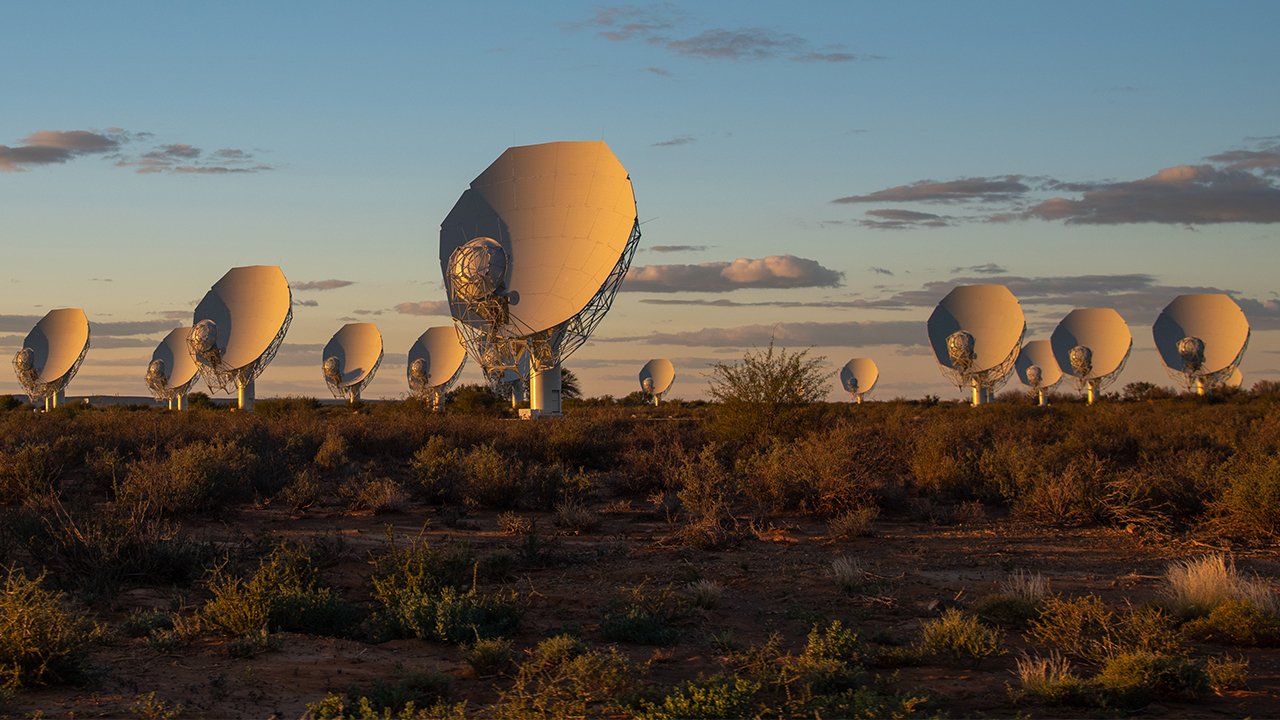Nkalakatha megamasser found, revealing a large galaxy collision
The Institute of Astrophysics of Andalusia (IAA-CSIC) participates in the discovery of the radio emission produced by a galactic collision
Galaxies are vast islands of matter, made up of hundreds of billions of stars, gas and dark matter. When galaxies collide and merge, the gas they contain becomes extremely dense, which stimulates hydroxyl molecules (made up of one oxygen and one hydrogen atom) and produces a specific radio signal known as a maser. Similar to a laser, but in radio waves instead of visible light, when that signal is very bright it is called a megamaser. An international scientific team publishes the detection, with the MeerKAT radiotelescope (South Africa), of the most distant megamaser ever found.
Hydroxyl megamasers, which signal the existence of a galaxy collision, emit light at a wavelength of 18 centimetres, in the range of radio waves. Once the team established that it was a megamaser, dubbed "Nkalakatha" (an isiZulu word meaning "big boss"), they began the search for its host galaxy. They found that the Nkalakatha galaxy is about seven billion light years away and has a long tail on one side, visible in radio waves. The light from the megamaser was emitted about five billion years ago, when the universe was only two-thirds of its current age. Given the distance and power of the phenomenon, the science team invited the public to choose its name. The winning proposal was “Nkalakatha”, an isiZulu word meaning “big boss”, which was suggested by a computer science student from Johannesburg.
Galactic collisions are thought to have been much more common in the past of the Universe, and the search for hydroxyl megamasers offers a tool to test this hypothesis. The MeerKAT radiotelescope, which has proved its worth with such a distant detection, is uniquely placed for such a search.

The discovery of this megamaser is part of the LADUMA project (Looking at the Distant Universe with the Meerkat Array). It is one of MeerKAT's major science experiments and searches for neutral hydrogen in galaxies in a deep region of the sky, extending back to when the Universe was only a third of its age. "It is impressive that, in just one night of observations with MeerKAT, we have already found a record-breaking megamaser. When LADUMA completes its more than three thousand hours of observation it will be the most sensitive survey of its kind", says Marcin Glowacki, a researcher at the Inter-University Institute for Data-Intensive Astronomy (IDIA) and the International Centre for Radio Astronomy Research (ICRAR) who is leading the research.
“LADUMA is exceptional for the distances it can explore, and it can systematically break its own distance record over the next few years", says Kelley Hess, researcher on the project at the Institute of Astrophysics of Andalusia (IAA-CSIC) and co-author of the paper. “Exploring both distant galaxies with LADUMA and the nearby universe with other surveys, such as AWES and WALLABY, in which we also participate, will give us a more complete picture of the history of galaxy mergers over the lifetime of the universe”.
Radio astronomy is at a really exciting moment with the future construction of the Square Kilometre Array and its predecessor telescopes, including MeerKAT, and unplanned discoveries are beginning to emerge from the unprecedented amount of data collected by these instruments. The Institute of Astrophysics of Andalusia is in an excellent position to participate in these future discoveries: the Spanish participation in SKA is led by the IAA-CSIC, which also hosts the Spanish prototype of the SKA Regional Centre.
M. Glowacki et al. "LADUMA: Discovery of a luminous OH megamaser at z > 0:5 ". The Astrophysical Journal, 2022. https://arxiv.org/abs/2204.02523
Instituto de Astrofísica de Andalucía (IAA-CSIC)
Unidad de Divulgación y Comunicación
Silbia López de Lacalle - sll[arroba]iaa.es - 958230676
https://www.iaa.csic.es
https://divulgacion.iaa.csic.es

